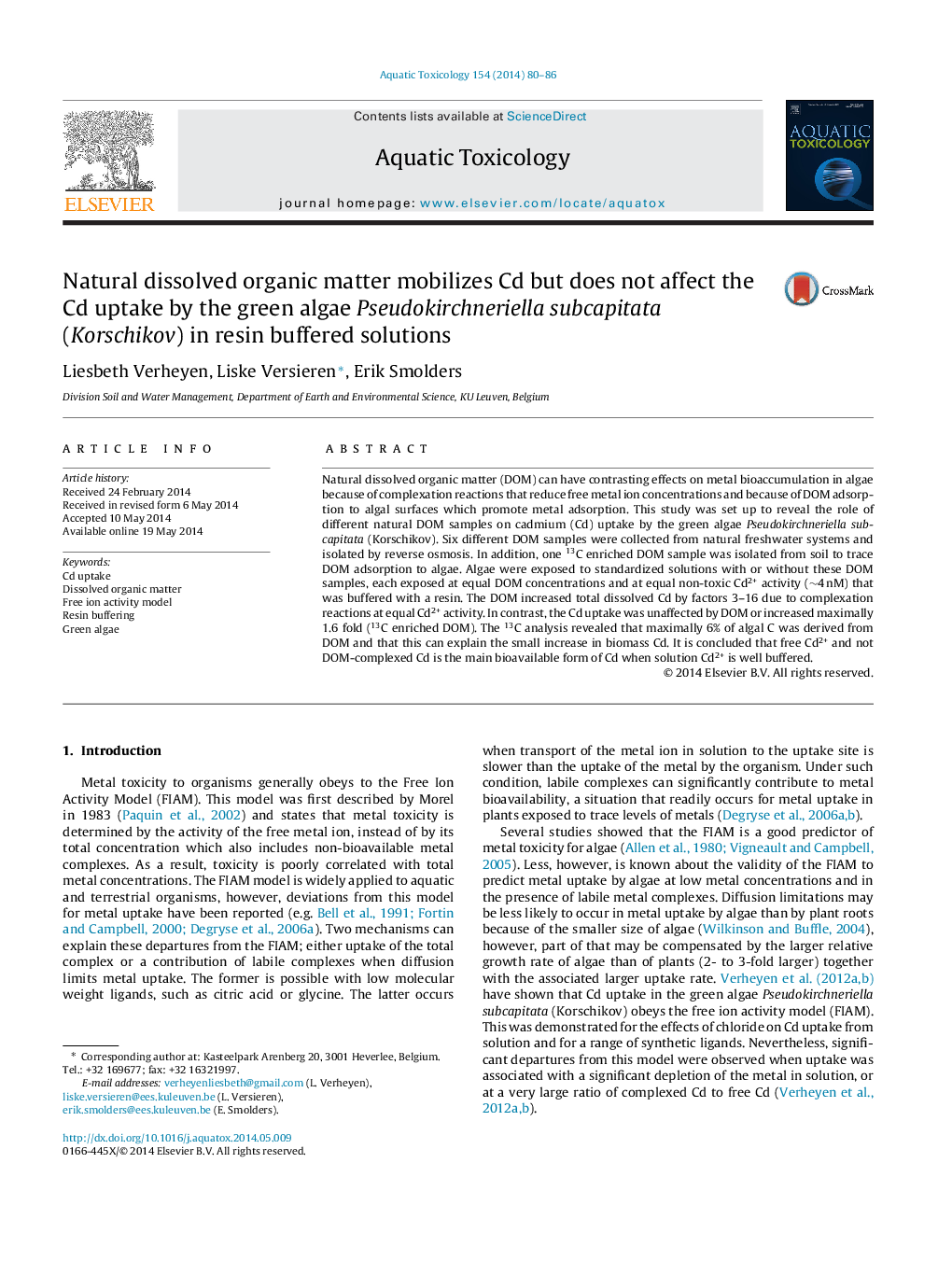| Article ID | Journal | Published Year | Pages | File Type |
|---|---|---|---|---|
| 4529206 | Aquatic Toxicology | 2014 | 7 Pages |
•Different DOM samples were added to solutions with a resin buffered Cd2+ activity.•This increased total dissolved Cd by factors 3–16 due to complexation reactions.•Cd uptake in algae was unaffected or increased maximally 1.6 fold upon addition.•Free Cd2+ is the main bioavailable form of Cd for algae in well buffered solutions.
Natural dissolved organic matter (DOM) can have contrasting effects on metal bioaccumulation in algae because of complexation reactions that reduce free metal ion concentrations and because of DOM adsorption to algal surfaces which promote metal adsorption. This study was set up to reveal the role of different natural DOM samples on cadmium (Cd) uptake by the green algae Pseudokirchneriella subcapitata (Korschikov). Six different DOM samples were collected from natural freshwater systems and isolated by reverse osmosis. In addition, one 13C enriched DOM sample was isolated from soil to trace DOM adsorption to algae. Algae were exposed to standardized solutions with or without these DOM samples, each exposed at equal DOM concentrations and at equal non-toxic Cd2+ activity (∼4 nM) that was buffered with a resin. The DOM increased total dissolved Cd by factors 3–16 due to complexation reactions at equal Cd2+ activity. In contrast, the Cd uptake was unaffected by DOM or increased maximally 1.6 fold (13C enriched DOM). The 13C analysis revealed that maximally 6% of algal C was derived from DOM and that this can explain the small increase in biomass Cd. It is concluded that free Cd2+ and not DOM-complexed Cd is the main bioavailable form of Cd when solution Cd2+ is well buffered.
